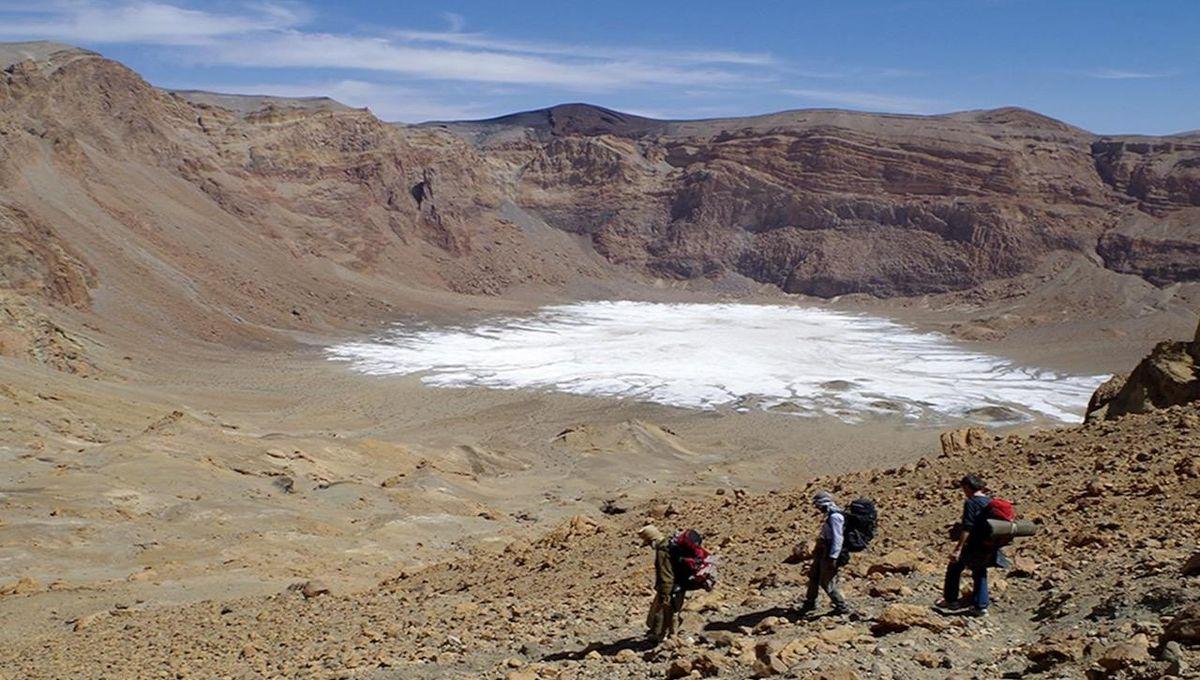Ancient Crater Lakes Rewrite Saharan Climate History, And Possibly Civilization’s Origins

Ancient Crater Lakes Rewrite Saharan Climate History, And Possibly Civilization’s Origins
Deep lakes in the Sahara lasted until more recently than previously thought, fed by an unexpected water source. The discovery indicates that some of the Sahara was a welcoming place for humans more recently than anyone had realized, painting a different picture of the region at the time the first civilizations appeared.
The rest of this article is behind a paywall. Please sign in or subscribe to access the full content. The world’s largest desert appears eternal, or at least very ancient, on the surface. However, paleoclimatologists have long known that towards the end of the last ice age, it was a vast savanna like the Serengeti today, and host to a similar abundance of life. Even after the world started warming, the region underwent what is known as the African Holocene Humid Period (AHHP), during which many people lived in the Sahara, but this is thought to have ended by 6,000 years ago. The Tibesti Mountains of Chad are the Sahara’s highest mountains, and new research shows the northern flank was still getting abundant rain long after other areas were dry. The crater, known in the Teda language as Doon Orei, or Trou au Natron (hole of natron) to the outside world, has been little studied owing to its remoteness and political instability in the region. Yet at one time, it may have had water as much as 330 meters (1,000 feet) deep and spanned 40 square kilometers (15 square miles). A recent expedition has brought back evidence that Trou au Natron had plenty of water unexpectedly recently and often. The conclusion is based on plant remains found in the now-dry lake, and oxygen isotopes from tiny water-dwelling organisms. Around 7,000 years ago, the Tibesti Mountains received at least 10 times as much rain (and perhaps occasionally snow) as the plains around them, researchers concluded. Drying did not really start until 6,500 years ago, and intensified about 1,200 years later. Models that use the average altitude over large blocks misrepresent the height of the Tibesti’s peaks, and therefore their effect on rain-bearing clouds, so researchers used a higher resolution to explain the findings. "For the first time, we were able to capture the steep orography and the dynamics of precipitation in the Tibesti in a climate model—something that had not been possible before," Professor Martin Claussen of the Max Planck Institute for Meteorology said in a statement. The AHHP has previously been attributed to a stronger West African monsoon, bringing rains much further north than they do today. However, to have rained in the Tibesti Mountains, while areas further west and south were dry, suggests the water was coming from the Mediterranean instead. How much influence north-easterly winds from the Mediterranean had during the AHHP’s peak remains unknown, but it seems they were important in extending the time when at least some parts of the Sahara were habitable. Further evidence for the source of the rain is that Trou au Natron was filled more often and longer than the much smaller Era Kohor to its south. Clouds from the north dropped their rain on encountering the mountains, while the south-eastern side was in a partial rain shadow. The authors' simulations suggest that average rainfall in Trou au Natron’s catchment averaged almost four times as much as in Era Kohor’s at the time. Some recent reconsiderations of history have claimed that many more early advances were made in the Sahara. According to this account, the great flourishing of Egypt was influenced by previous developments to the west and south, rather than developing in place, or being inspired purely from what had occurred in ancient Mesopotamia. Egypt’s rise was probably driven by the migration of people out of the Sahara as it ceased to be welcoming, and proponents of this view claim they brought relatively advanced technologies and ideas with them. Although a recently rediscovered Moroccan civilization probably didn’t precede Egypt, it makes even older sites look more plausible. Nevertheless, claims for ancient civilizations are common, and most lack evidence and often contradict what exists. Most archaeologists are skeptical of the Saharan civilization hypothesis for a variety of reasons, including timing. If civilizations flourished in the Sahara during the AHHP, what took place in the thousands of years between the region drying up and the first signs of cities in Egypt? Claims of Saharan civilizations are speculative without sites being identified, but the new work suggests that, at least, there were places where they might have flourished that have probably not been explored. The work also has implications for the future, and not just of the Sahara. It shows that as global climate shifts cause regional change, local effects can be more varied than previously assumed. Consequently, to prepare for a hotter world, higher resolution predictions are needed for the changes in rainfall that can be expected. The study is published in Nature Communications.


